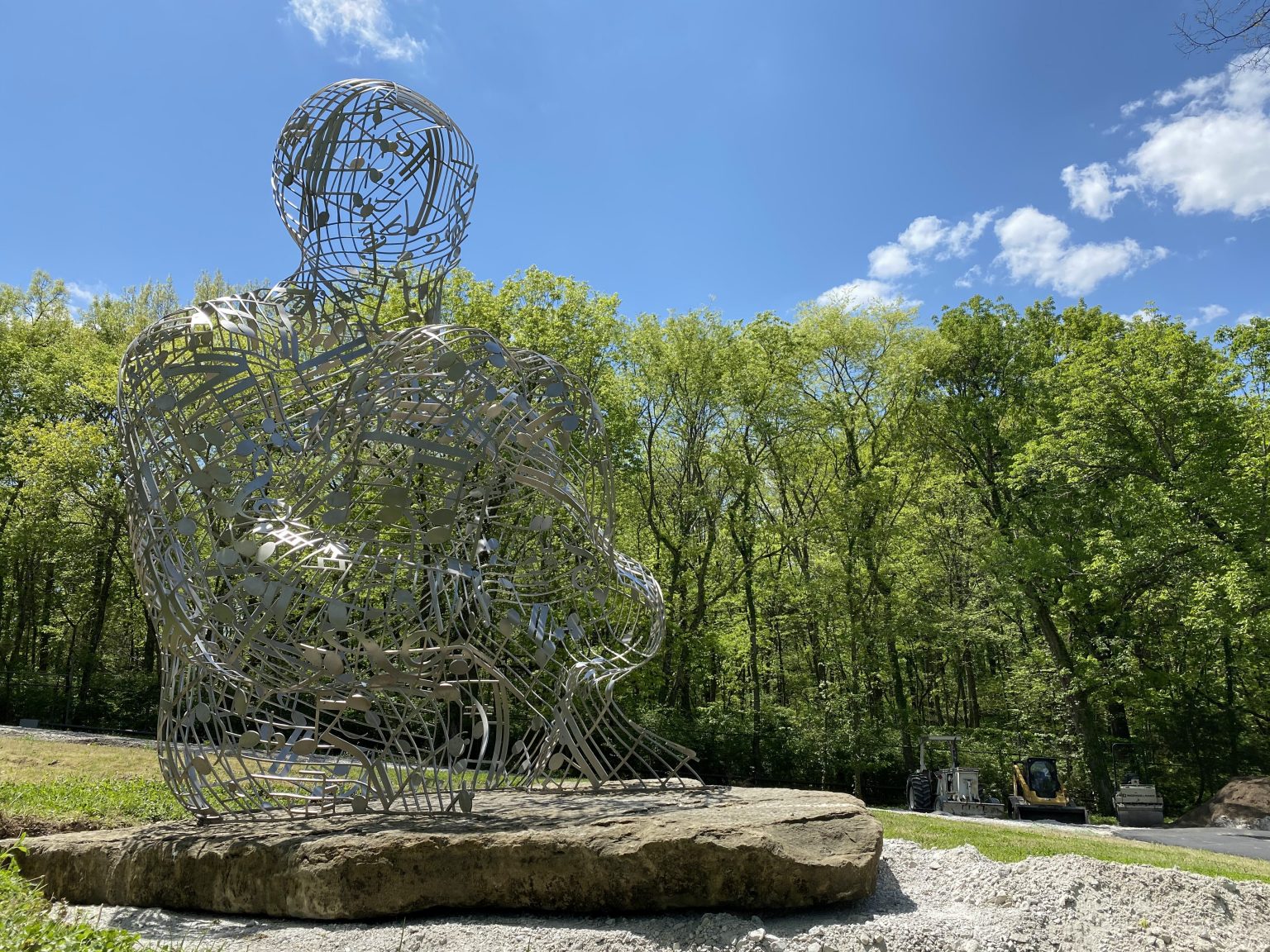In Celebration of International Sculpture Day…Plensa Sculpture Returns to Cheekwood
Published April 21, 2021
In 2015 Cheekwood acquired Silent Music II by the internationally renowned Spanish artist Jaume Plensa (b. 1955). First shown as part of the exhibition Jaume Plensa: Human Landscape, held that same year, the sculpture has since been on view at Riverfront Park in downtown Nashville, in the Riverview Gardens managed by Cheekwood in partnership with Metro Parks. Silent Music II is now back on the Cheekwood grounds, installed near the main entrance of the Ann and Monroe Carell Jr. Family Sculpture Trail.
Jaume Plensa (Spanish, b. 1955). Silent Music II, 2013. Stainless steel and stone. In honor of Lisa & David Manning, The Cheekwood Campaign. 2015.2.


Born in Barcelona, Spain, where he still lives and works, Plensa has become one of the world’s foremost sculptors, particularly of large-scale, outdoor or public works. He has realized major projects in Bangkok, Calgary, London, Montréal, Paris, Shanghai, and Tokyo among many other cities. Plensa is perhaps best known in the United States for the celebrated Crown Fountain (2004) in Chicago’s Millennium Park and the nearly forty-six-foot high, six-ton Echo (2011), first shown at Madison Square Park in New York and now installed at the Olympic Sculpture Park in Seattle.
Jaume Plensa (Spanish, b. 1955). Crown Fountain, 2004. Glass, stainless steel, LED screens, light, wood, black granite, and water. 2 towers, 16 meters high. Millennium Park, Chicago. Photo courtesy: jaumeplensa.com © Jaume Plensa
The majority of Plensa work is figural, often depicting the forms of human bodies or faces, and draws on the traditions of portraiture. His figures are usually shown at rest or in poses of contemplation, though their identities are left open to interpretation. For Plensa, the focus on the body is not just about physical presence, but the ways in which human beings perceive and experience the world—a theme further echoed by the artist’s frequent references to language and music in his work.
Plensa frequently references his childhood memories of listening to his father play the piano, and the impact of growing up in a house filled with books and music. He recalls the total body experience of being enveloped by the sounds of poems being read or the melodies emanating from the piano, of the sounds and words swirling around him. This is the feeling he seeks to evoke with his sculptures of faceless, open forms constructed from letters from different alphabets and musical notes like those visible in Silent Music II.
The metal notes that comprise the transparent, open body of Silent Music II are a specific nod to Nashville and its long, rich connection to music, but they also reference the universal language of music, a form of communication that is not just heard, but also, in its silence, felt across the human experience. As Plensa himself states, “Silence to me is the capacity to be you with yourself and to try to understand the rest of the world, not to be apart.” One musical note or letter along, after all, does not carry much weight, but as the artist continues, “together with other letters you get a word. A word with a word becomes a text, and so on. A person alone is nothing, but together with others we become family, a neighborhood, a city, a county, a country. My portraits are similar – I love diversity, that is the richness of our society, and it’s the same as putting all the alphabets together, creating amazing diversity and how well we are when we are together.” [i]
[i] As quoted in Ginny Van Alyea, “An Interview with Jaume Plensa,” Chicago Gallery News, Published November 8, 2017, https://www.chicagogallerynews.com/news/2017/11/an-interview-with-artist-jaume-plensa.

